What Is a Push Notification & How Does It Work?
Recently, Google considered push notifications an important marketing trend that marketers can’t ignore.
In the age of GDPR and other privacy protection laws where customers don’t appreciate being intruded with unwanted emails or messages, push notifications work as a great alternative as it works on the principle of permission-based marketing.
More and more businesses are adopting push notifications; that’s why we have crafted this detailed guide to show you everything about push notifications. Starting from the question of “What is a push notification?” we’ll show you other valuable things to understand this topic.
We should begin right now!
Firstly, what is a push notification?
In fact, there are many definitions for push notifications around. Many call them actionable messages, others call them rich messages, while many use the term personalized messages.
Which of these is the exact description? All of them, actually.
A push notification is a short message that often pops up on the user’s desktop or mobile, nudging them to take some action. Below is how we break it down:
- Sent by a website or app to the user’s desktop or phone
- Used to send messages, notifications, and alerts to the user in the real-time
- Can contain rich media content like images, videos, or GIFs
- Content within the push notification can be personalized to deliver the desired action from the user
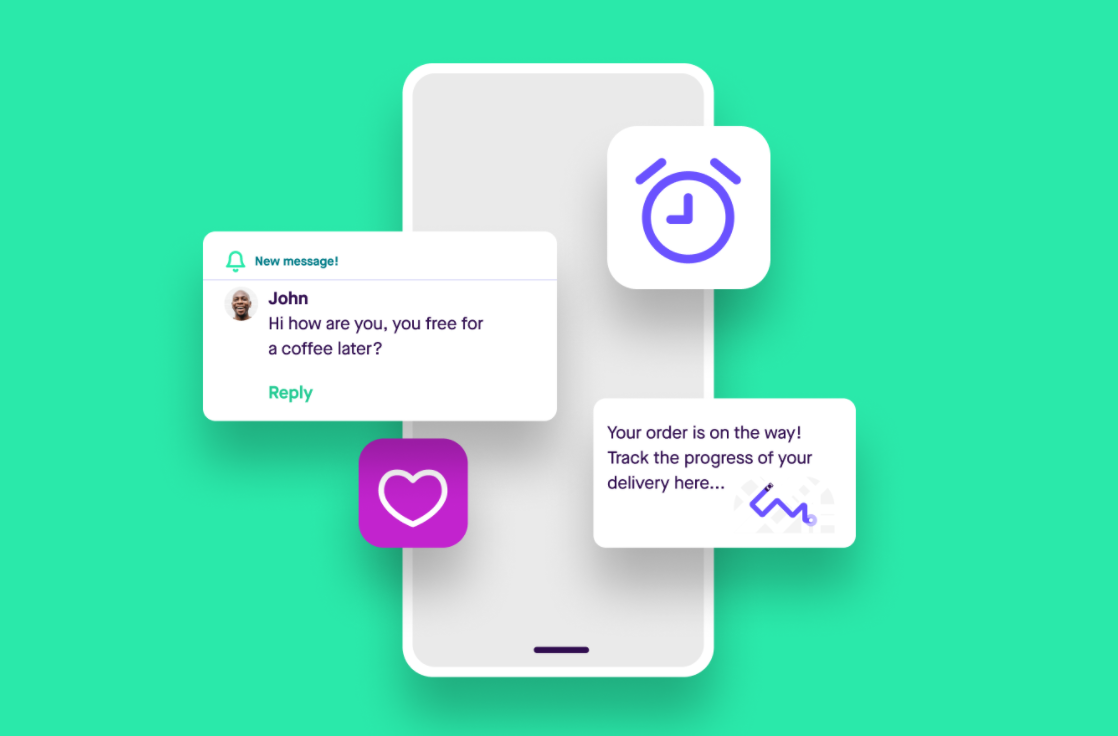
Your customers are so busy that they are likely to forget about excellent offers you had announced a few days ago via SMS or email, or forget about the shopping cart they’ve abandoned after adding many items to it.
If you want customers to stay updated with your latest offers or remind them of the impending items in their shopping cart, push notifications can be the perfect way to communicate. With email marketing open rates declining at a rapid pace, push notifications can be great for businesses to engage with customers and reduce churn.
How does a push notification work?
Web push notifications
Web publications are an excellent instrument to let users opt-in for updates from the website they visit. On the site owner’s side, web push notifications allow re-engaging with clients with relevant content.
When someone visits a website, it sends a message to the GCM (Google Cloud Messaging) push service. In turn, that sends a request to the service worker on a web browser. These services then check whether the visitor has signed up for the updates before.
In case there’s a relevant website update, the service workers also send push notifications to those who have already signed up for updates.
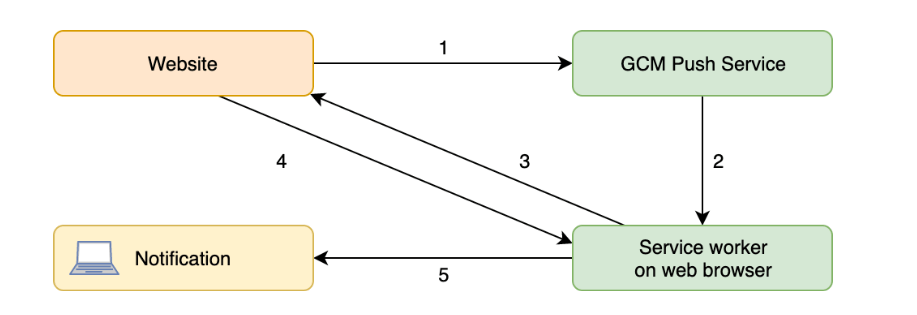
Web push notifications are especially helpful for social network platforms and news websites. You can also utilize them for E-commerce stores when you launch a system of flash deals, for instance.
Mobile push notifications
On Android, mobile push notifications are sent (are received) by default. On iOS, they’re blocked by default. So, you would need your users’ permission - they have to opt into your push messages. In the long run, this is much more effective, especially considering the GDPR rules - you get the permission from customers, which gets you on the safe ground.
Desktop push notifications
Desktop push notifications only appear on the users’ desktop. Unlike the two above types, they are driven mainly by the software installed on the computer. Actually, they are more challenging to set up and require developers’ help.
Benefits of a push notification
The obvious benefit of push notifications is that you can time the message and customize it depending on the situation. For instance, a customer who had abandoned their shopping cart will receive a reminder notification, while a customer who hasn’t used the app for shopping for a long time can receive special offers that are relevant to them.
Push notifications are also a powerful marketing tool. Studies show that push notifications can boost app engagement by up to 88% and lead to 48% of mobile users making an in-store purchase.
Below are some common benefits of push notifications:
-
Attract users’ attention. According to researchers, an average American smartphone user receives around 46 push notifications every day. Although the competition is fierce, push notifications are essential in terms of attracting users’ attention.
-
Increase user engagement. The opt-in rate for push notifications on iOS devices is 44%, and 91% for Android devices. This makes push notifications an active tool in terms of outreach.
-
Boost communication. With the help of push notifications, brands can create micro communication touchpoints, which help to build strong relationships.
-
Support users. Push notifications assist people at every single stage of their buyer journey.
-
Increase conversion rate. With these push notifications, you can retain existing users and re-engage inactive subscribers, resulting in a more significant number of conversions.
-
Drive traffic. Personalized and time-sensitive push notifications serve as a proper channel to drive traffic to specific web pages, or in the case of in-app notifications, to features in the app.
-
Easily set conditions to trigger notifications based on your customers’ actions and characteristics with Magento 2 mobile app builder.
The elements of a push notification
Typically, a push notification includes 6 essential elements: title, description, URL, icon, banner image, and a CTA (call-to-action) button. It is vital to note that the last two features are only available on Chrome.
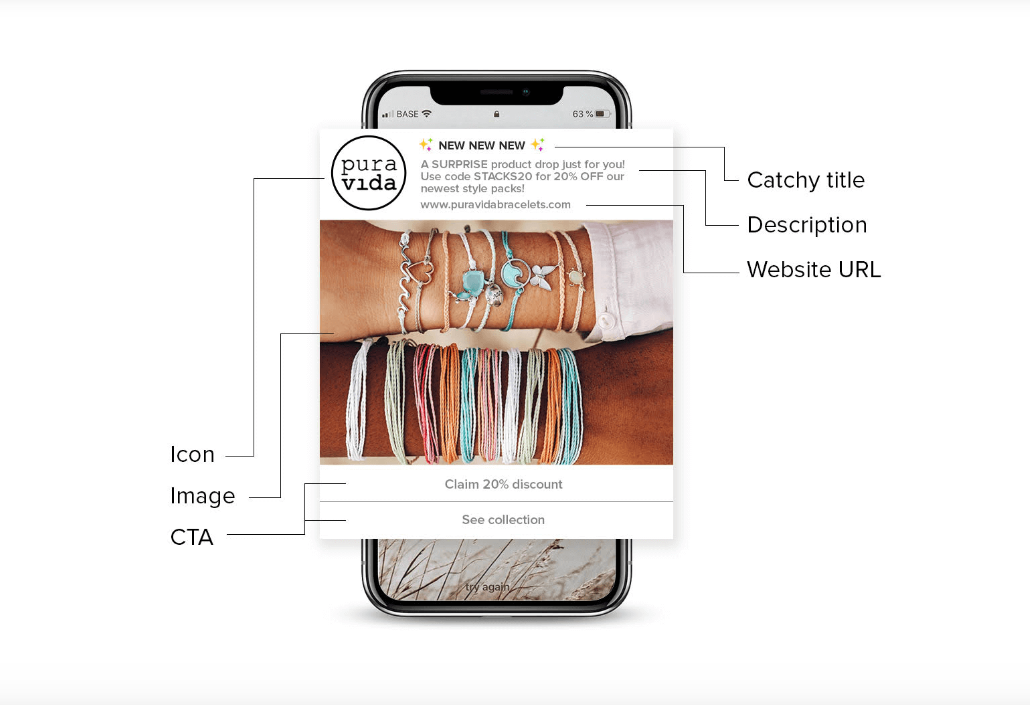
Below is a more detailed breakdown:
-
Notification title. Many brands choose to only put their names here. However, a catchy notification title to grab attention seems more effective.
-
Notification description. Even though the character count varies from browser to browser, the rule is simple: the shorter, the better. Your description should catch the user’s eye and hook their interest.
-
Notification URL. The website domain that sends the push notification.
-
Notification icon. You can use your brand logo or image here. The default icon is often a bell. It’s a good idea to use your brand logo, as it will help you distinguish your message from the number of notifications your users receive on a daily basis. You don’t have to write your brand name in the notification title, freeing up characters for a more compelling message. We suggest that your icon be 100x100px and less than 20KB in size.
-
Image. Banner images are available in Chrome 56 and above. On top of having a compelling message, adding a banner really helps you generate more clicks. Thus, it’s necessary to take advantage of this feature.
-
CTA buttons. You can add up to 2 CTA buttons in one message and use these buttons to trigger a number of actions.
Different types of push notifications
There are four common types of push notifications. Let’s learn more about them right below!
1. Web push notification
Web push notifications are often sent to a user through desktop or mobile web.
These alert notifications simply slide in at the top/bottom right-hand side of the desktop screen, depending on the operating system being used. They also appear on a mobile device that is quite identical to how push notifications are delivered from an app. Web push notifications are often delivered on the desktop or mobile screen anytime users are active on their browser, no matter whether or not they are on your website.

These push notifications are mainly used by marketers to boost website engagement and motivate visitors to keep coming back to their website, thus increasing conversions. It is quite easy to create web push notifications for your website, and this can be implemented even by those with little or no technical experience. That’s what makes web push notifications such a handy tool for marketers.
2. Desktop push notification
As the name suggests, desktop push notifications appear only on users’ desktops.
These push notifications are mainly driven by the products that you’ve installed on your desktop, with the target of driving customer engagement. Compared to web push notifications, they are quite difficult to build and require a developer’s help.
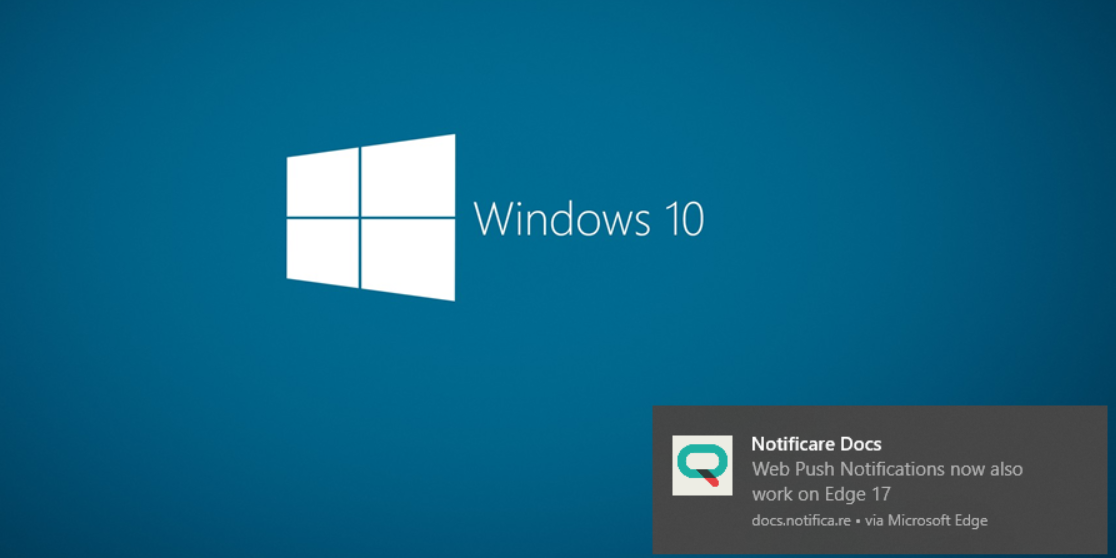
3. Mobile app push notification
Quite similar to desktop push notifications, mobile app ones are also triggered by a downloaded/existing app on your mobile.
Unique identifiers are registered for both the device and the app with the OS (Operating System) push notification service when someone opens the app. These IDs are shared with the app publishers, who then craft manually and send push notifications to increase customer engagement.
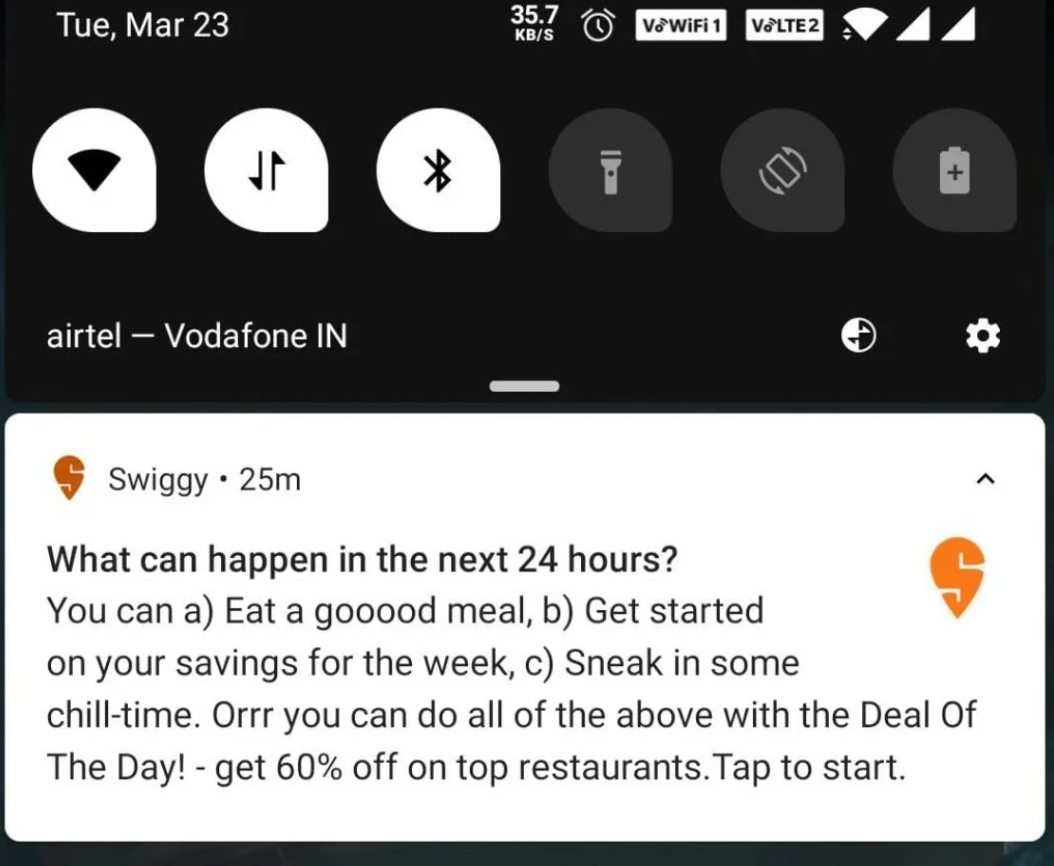
When the app user opts-in messages, push notifications can be displayed in three locations on your mobile - lock screen, banner, and notification center. While Android allows for a default setting of opt-in and manual opt-out users, iOS doesn’t enable apps to send notifications to customers until they agree to receive messages.
Like desktop push notifications, mobile app push notifications are quite difficult to create and require developers help to be built.
4. Push notification on wearables
Today, push notifications can be sent on wearable devices as well. If you have noticed, people wearing smartwatches are able to receive notifications on their wearables.

These devices are synchronized with their smartphones, which allows the wearables to directly display notifications from their mobile apps. Both mobile and wearables can give you the leverage in order to adjust notification settings. You can opt-in to get push notifications from some apps while disabling the feature for the rest.
As the screen size of wearables is smaller than mobile phones, push notifications look quite different. They are shorter than mobile notifications.
Different push notification campaigns
There are certain push notification campaigns that customers like receiving. They can keep your customers interested, entertained, or even feel loved. Below are some push notification campaigns that commonly appear.
1. Rich push notifications
Rich push notifications can be sent to your user’s device with a rich media attachment, such as an image, video, animated GIF, or audio. They enable you to communicate with customers in an inviting way even when they are not actively using your app or visiting your site.
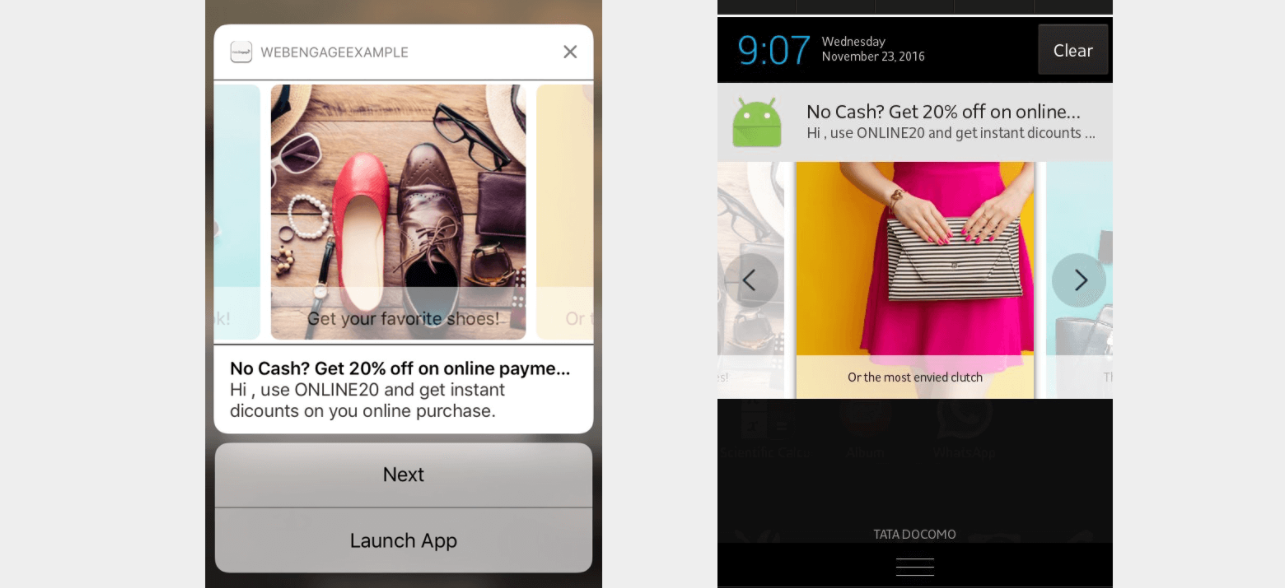
Rich push notifications can include some interactive elements called “content extensions.” They let users complete actions right from their device’s lock screen without launching an app. You can use them to encourage users to shop for a particular item or sale, register for an upcoming event, or share the notification with their friends.
Other examples include:
- Informing users of a special event
- Announcing a new product/service
- Sending price alerts or sales notifications
- Sending news or weather updates
- Guiding new users through onboarding steps
Rich push notifications can also eliminate the usage of too much text, thus conveying the exact message even to people who may not read the entire text. Plus, seeing positive emojis, images, or GIFs in push notifications urges them to click on your push notification.
2. For-your-information (FYI) push notifications
Do you want to let your customers know about the latest technology trends? Then, send them this technology trend alert!
Similarly, you can send push notifications on the latest weather updates, brand level changes, stock updates, and much more. If this fits your business goals, start pushing!
3. Triggered push notifications
Triggered push notifications can be used as a proactive medium to follow your customer journey. It lets you push a series of automated messages based on predefined rules as well as real-time data collected after someone enters the campaign funnel.
When creating triggered push notifications, remember to:
-
Determine your target audience. If you have a specific set of audiences in mind, create custom target groups of subscribers.
-
Personalize your automated communications. You should add a human touch to scheduled push notifications. Create various custom attributes and interact with subscribers personally.
-
Define entry trigger conditions and set targets to convert visitors based on the page visited. This is the entry point for anyone to become a part of your funnel. Determine who is qualified to receive your notifications based on the pages they visited. Also, set predefined goals that work as exit points for your closed campaigns, meaning subscribers can convert and exit your campaign as soon as they hit the goal.
-
Define entry trigger conditions and set targets to convert visitors based on the element clicked. This is the entry point for people that click on any particular element, such as any link or button on a particular page or throughout the website. Like the previous one, you should define the entry trigger and personalize it further based on your goals.
-
Track your campaign. Keep an eye on the number of subscribers converted and the conversion rate. Also, pay attention to each notification delivered and the click rate.
4. Abandoned cart push notifications
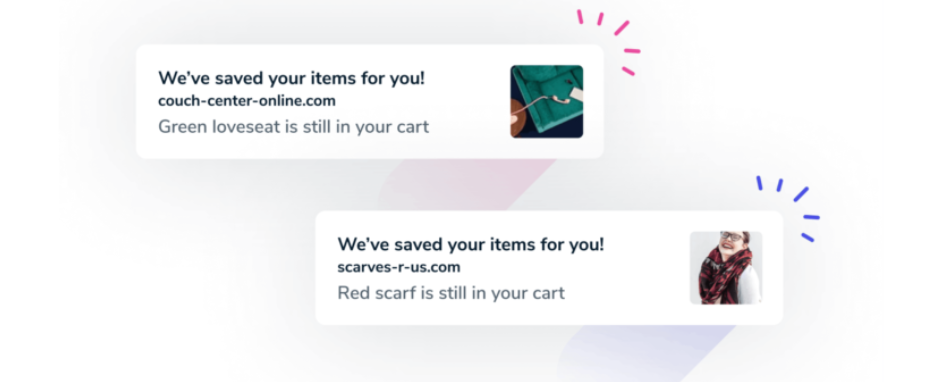
Sometimes, customers add something to their shopping cart and leave it there for varied reasons, such as costly shipping fees, payment failures, or long delivery time. You should retarget these lost customers through push notifications as follows:
-
Funnel to recover abandoned carts. Schedule a series of automated push messages to be sent at the optimal interval until they’ve completed their purchase. You should set up an entry trigger for each campaign with a set of predefined conditions and logic.
-
Send push notifications to the right target audience. Build a dynamic list of customers who added items to their shopping cart but didn’t complete the checkout process. Categorize them based on their location, devices, platform, and much more.
-
Track your success with engagement metrics. Don’t just get customers back to their abandoned carts, but also track how many of them completed their purchase.
Try sending them something like, “You left something you love. We’re holding on to them, but not for long!” Actioned-based push notifications give customers an extra push and create a sense of urgency to complete the desired action.
5. Time-bound push notifications
In order to create a sense of urgency among visitors, you should time-bound push notifications. You can send them to push notifications about limited-period offers, flash sales, and so on.
For this campaign type, you need to set a notification expiry once the offer period lapses so that people who come online after its expiry don’t click through to find an expired deal.
6. Geo-location push notifications
This type is excellent for stores nearby, date match alerts, and many more. For instance, if you want to send users deals on fine dining restaurants in their location, then send them updates according to their preferences in their vicinity.
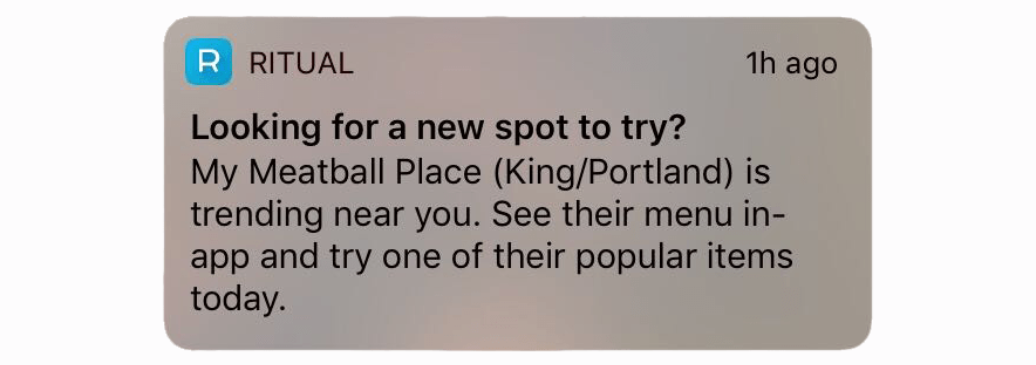
7. Transactional push notifications
They are a great way to update your users about the latest status of their transactions, such as subscription statuses, order details, shipping information, payment information, etc.
Such notifications helo report the relevant and necessary information to particular users, while increasing the chance of planning a retargeting campaign. They serve as the best examples of tailored and personalized communications with your target users.
Push notification examples across various industries
Push notifications are mainly used by media publishers, bloggers, and E-commerce marketers. However, they are not restricted only to these domains. They have been found to yield positive results across various industries. We’ll show you in detail right below.
1. Push notification examples in E-commerce
Push notifications are often used to announce new products, promote special sales and time-sensitive deals, and deliver personalized coupons. They are also used to remind users about abandoned shopping carts and cross-sell or upsell other products.
For example, Buy Whole Foods Online, a food seller in the UK and the rest of Europe, decided to use push notifications to bring customers back to its website and guide them to correct product pages.

This push notification recorded a click rate of 15.2%, and after clicking on the push notification, 71 out of the 97 visitors who landed on the product page actually converted and made a purchase. This push notification campaign helped the brand clock a 3-digit revenue.
2. Push notification examples in education
Push notifications can be used by educators and training website owners to connect with their subscribers online, nudge potential users to learn and engage, as well as send updates to existing students in real-time.
To be specific, they can:
- Reduce course drop-outs by engaging with learners in real-time
- Encourage a revisit to your website with mock tests or interesting facts
- Enhance the level of engagement by frequently delivering interesting facts or knowledge
- Provide valuable course information and updates
- Promote other courses for people who completed a course
For example, Duolingo is a language learning app that lets you learn everything in a fun and free environment. Unlike other brands, Duolingo sends push notifications in an aggressive way that makes its users feel like failures.
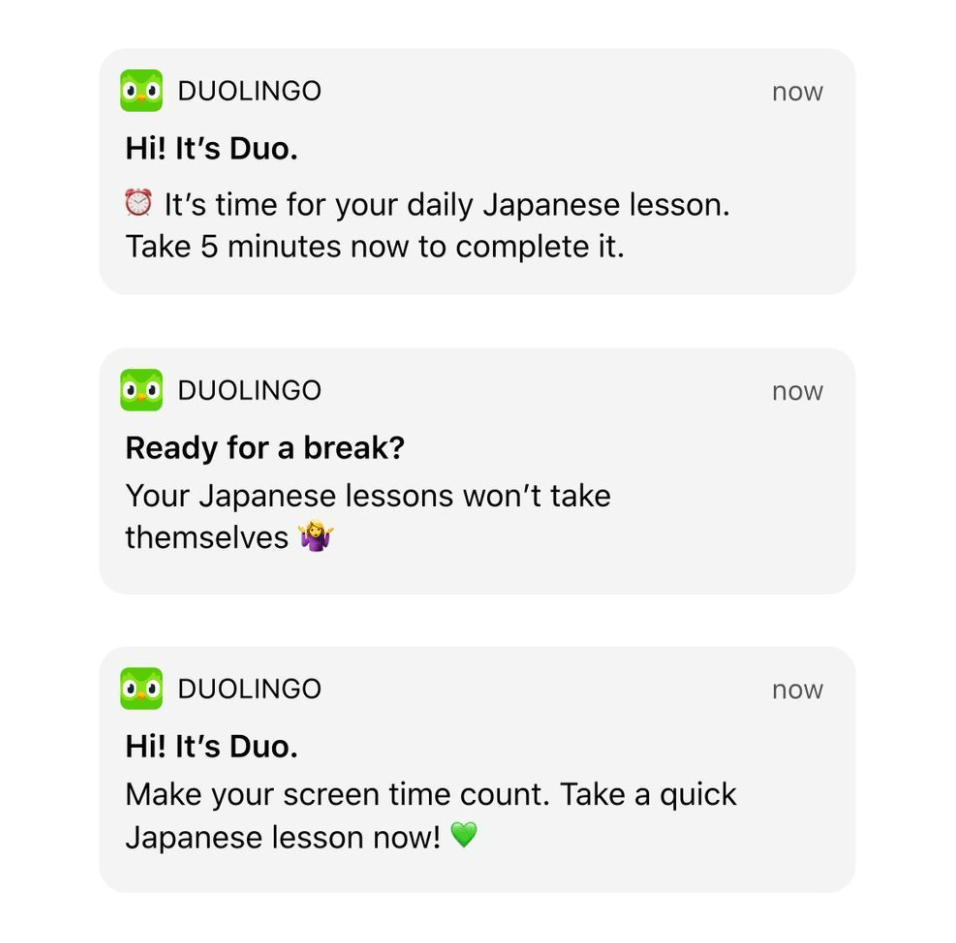
In an interview with Mashable in 2017, the CEO of Duolingo - Henry P. Twolingos - believed that “If our passive-aggressive push notifications don’t make you learn French, then I don’t know what will, so really, we’re all you have.”
While this push notification strategy receives a lot of arguments, it’s actually successful. It is a smart tactic from a brand attempting to quash complaints by poking fun at itself. Nevertheless, not all brands would survive the bashing that Duolingo has taken.
3. Push notification examples in travel and hospitality
Recently, push notifications are largely used by travel and hospitality services. As reminders to check-in or announcements about scheduling changes, push notifications let businesses keep customers updated with crucial, timely information. Triggered push notifications can be created to remind customers about deals and booking offers, or cross-sell or upsell based on their recent transactions.
For instance, LA Tourism, a tourism marketing organization, uses push notifications to grow its website traffic and boost customer engagement and retention. By segmenting the audience, they increased the click rate by 8% and reduced the bounce rate by 43%.

You’ll achieve better results if using personalization in your push notification campaigns. Let’s say, if someone is looking for flights to Venice on your website, consider sending them a personalized push notification about the top 10 hotels in the city. It is a way of telling them that you really foresee and understand their needs.
4. Push notification examples in health and fitness
If you’re running a website related to health and fitness, you are also aware of the rising competition. Many website owners are trying to approach clients via emails and texts, and to be honest, people neither have the intention nor the time to read all of them.
Push notifications can help your health and fitness website stand out. Consider using push notifications to:
- Inform different classes that are being recently conducted
- Alert gym members, send diet tips, diet reminders, and different recipe ideas
- Share different workout, fitness exercise routines, and more
- Trigger new discounts on different packages, the group offers, and many more
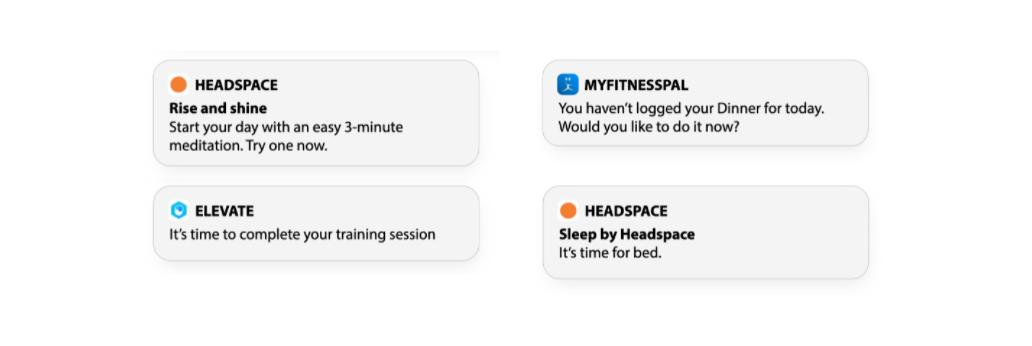
5. Push notification examples in gaming
A huge number of people use their computers, tablets, and mobile phones to play games regularly. So, how can you approach this audience to increase traffic on your gaming website?
The answer is push notifications!
Push notifications can keep your visitors and customers engaged, and motivate them to return to your website.
Games used to belong to the Entertainment category. They have their own category, but they are still associated with provoking positive emotions in players.
Instead of sending boring notifications, you can try tiny jokes to catch players’ attention and make them return again and again. Let’s have a look at the push notification by Family Guy: The Quest for Stuff!
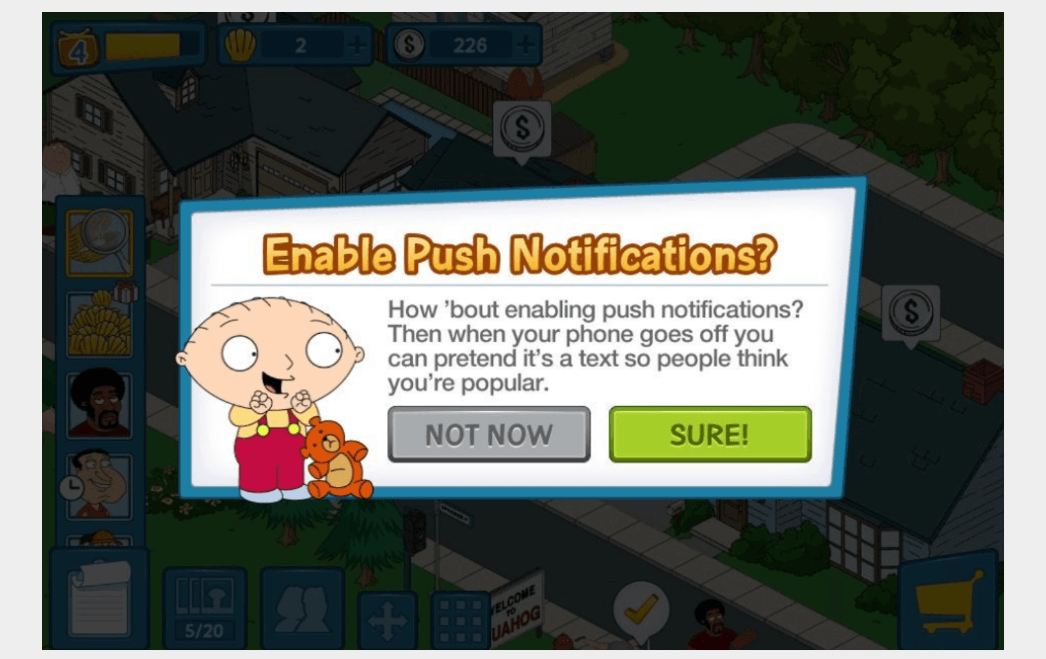
By using humor in push notifications, they can create an emotional attachment that results in a better click rate and a higher lifetime value of users who are excited about receiving fun notifications going forward.
6. Push notification examples in cosmetics
The subscriber list for your beauty website is growing, and you’re publishing new content often or introducing new products and have discounts for some. You’re also sending email newsletters about the same.
However, just think about how many of them open your emails and read those posts, among a number of other emails lying unread in their inboxes. It’s a daunting task. That’s why you need push notifications!
Inform your subscribers about new products or other deals using push notifications. Also, try sending a welcome push notification that warms up their hearts and makes them proud for choosing your products. Use a personal tone that can help you build a good rapport with new subscribers.
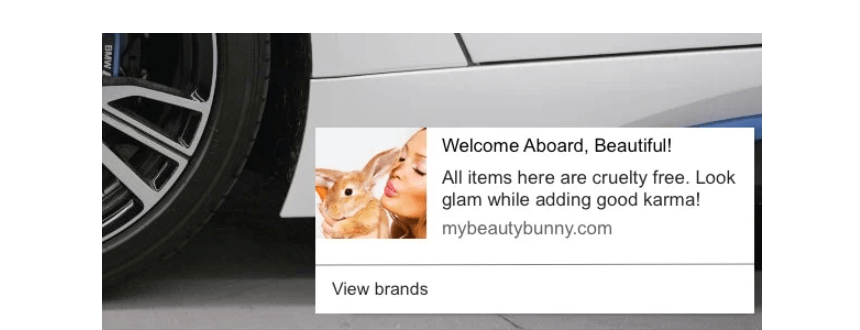
7. Push notification examples in job portals
Push notifications make growing and retaining users on your job portal become an easy task. However, make sure you segment your users as well as send notifications that entice them to perform the desired action.
For example, when you’re sending a push message to look for candidates, you could add a button to take visitors to your career website and another button to take them directly to the application form.
Also, you can go that extra mile to personalize your push notifications based on users’ browsing activities.

Best practices to implement push notifications
As you can see, push notifications are powerful. However, if not done the right way, they can get intrusive. Read on to know how to use them judiciously!
-
Use the right emojis. Emojis actually make your push messages warmers and visually richer. But if you use too many of them or use the wrong one, it could lead your users to opt-out of push messages. So, use emojis that are culturally and contextually correct, while ensuring that they’re used only when needed.
-
Use concise content. You have limited space and characters to lead users to take action. Make sure that your content is concise yet impactful, while giving a clear idea of what you expect users to do.
-
Leverage the right context. Context is as essential as content. Sending a push message without the right context can be as meaningless as sending Valentine’s day wishes on Christmas. Thus, consider the location, demography, and situation before creating your push notification.
-
Pay attention to timing. You don’t want to disturb users in the early morning or the middle of the night with a push notification. Research what time would work best for your users and set the timing for sending notifications accordingly.
-
Don’t forget the frequency. While your audience may have permitted you to communicate with them, you must use this opportunity very judiciously. Send push notifications sparingly only when it’s really necessary.
The bottom line
What is a push notification?
We gave you a detailed answer via this article!
More than that, we also showed you other information that would help you a lot with your next push notification campaigns.
If you find this guide helpful, don’t hesitate to share the word with your colleagues and friends, and bring them a step closer to winning their business goals by using push notifications.
Thanks for reading!
New Posts






